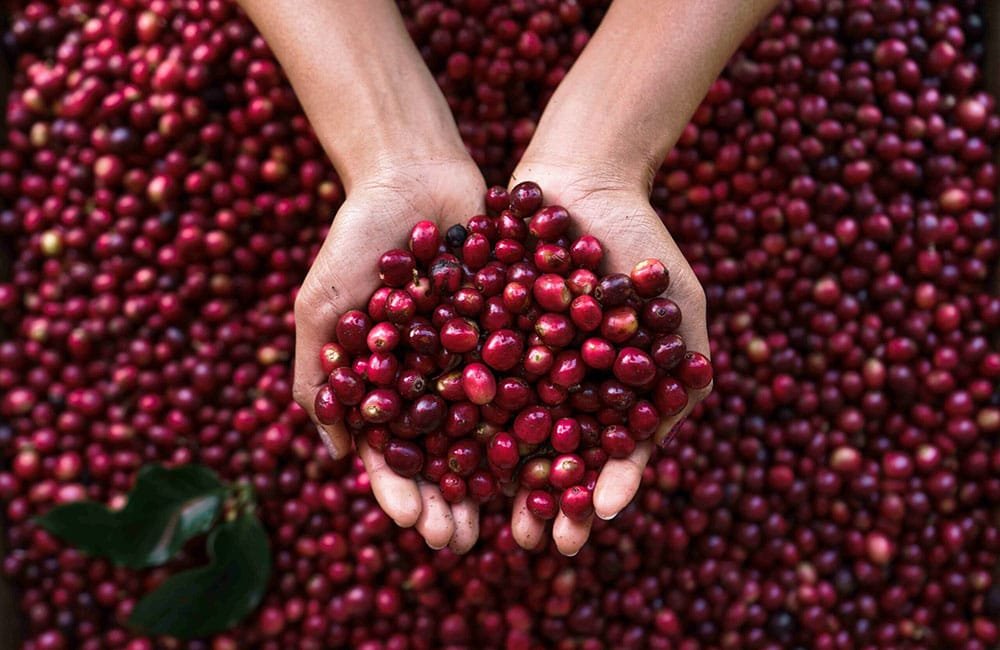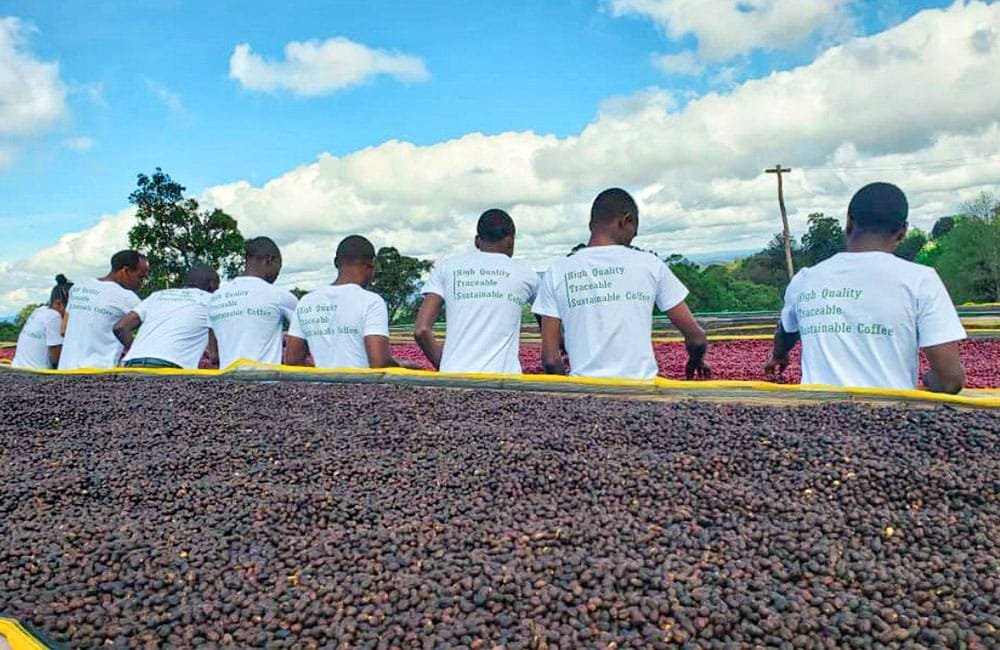| Guji | |
| 2,173 masl. | |
| Gibirinna 74110 & Serto 74112 | |
| Natural | |
| Smallholders |
This kebele is in the Guji region, famous in Ethiopia for having ideal conditions for growing specialty coffee.
This Shoondhisa coffee has been cultivated under the shade of the native forest, with optimal weather and rain conditions and at an altitude of 2,173 metres.
The coffee comes from small producers with farms of less than 2,5 hectares and has gone through a natural process.

A local project coffee
Together with his brother Assefa they have developed a project to improve the coffee quality from small producers and help them export it.
Turé and Assefa have set up a small company to export coffee that works with local producer cooperatives. This allows coffee growers a direct and local deal to export their coffees.
Turé and Assefa also help small producers through education and improvement of the harvest and processing.
These brothers only work with coffees that they process naturally.

The natural processing of a specialty coffee
Drying the cherry together with the coffee seed, which is what we will ultimately roast and brew, causes the sugars and other compounds present in the cherry to ferment together with the seed.
This means that part of the organoleptic qualities of the cherry’s fermentation and drying pass to the seed. Therefore, the same coffee could have a different cup profile if a natural, washed or honey process has been followed.
Coffees with a natural process usually have a very particular cup profile, although different in each coffee. This is because the seed dries with the cherry.
The brothers Turé and Assefa have managed to refine this process so that, as they say, their coffees are “Ethiopian first, and natural second”.


How this Shodhisa has been processed
Once there, the cherries are selected to ensure that only those that are at their optimum ripening point go on to the next phase.
Cherries that have defects or are not at their optimum point are used for lower quality batches.
The cherries are then spread out on raised beds in thin layers and continuously turned over for 15 to 20 days. Drying time depends on weather and humidity.
The second step, once the first drying phase has finished, is to stack them in thicker layers. In this way, the drying process is delayed, achieving greater uniformity.
The moisture percentage of the cherries in the first phase should be around 25%, while in the second it should be around 12%.
Once the drying process is complete, the cherries are pulped and the seeds washed. They are then packed in PRO GRAIN bags, which maintain adequate moisture during transport, and finally in jute bags.


Specialty coffee to improve the local economy
The project of Turé and his brother is not a unique project in Ethiopia or in Africa, although that does not make it any less valuable.
Fortunately, there are numerous projects, companies, and cooperatives that are focusing on growing specialty coffee batches.
This has a positive impact on the local economy and the living conditions of farmers, as well as on the environment.



